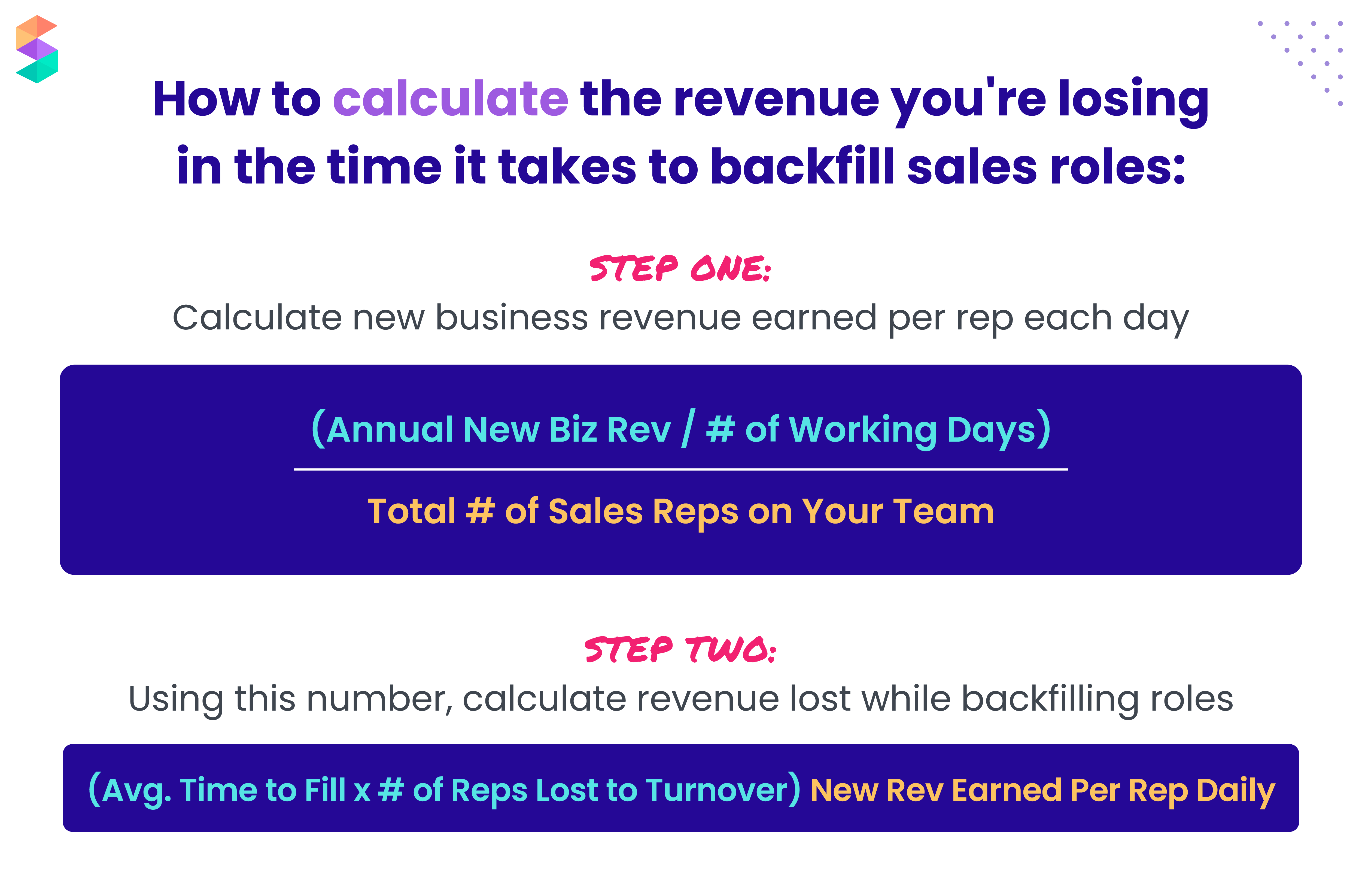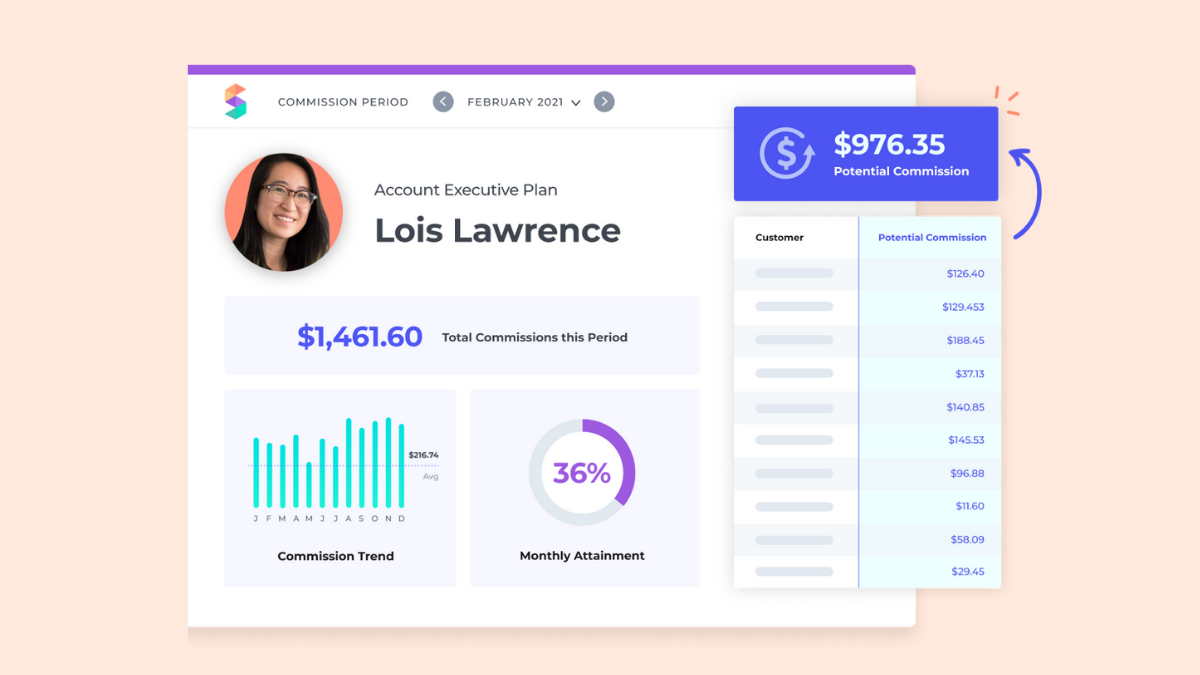Employee churn is costing your sales organization— big time. U.S. businesses lose $1 trillion to voluntary turnover per year (source). In B2B sales, the average turnover rate is a whopping 35% (source).
Why so high? What does this mean for organizations? And, is there anything that can be done about it? Today, we answer these questions– and more!
Compensation is the biggest line item at any organization, but leaders often overlook the processes behind it— including commission calculation and commission management processes. For many teams, this means turning to manual, ad hoc workflows and good ol’ fashioned commission spreadsheets to do the job.
The issue, however, is that manual processes leave room for mistakes. Mitigating blips may be manageable when you’re working with small teams and simple comp plans. But with growth comes complexity, and with complexity comes, well, errors.
Once you start outgrowing spreadsheets, errors can quickly escalate from an administrative nuisance to a torrent of employee turnover. There’s no way around it. When reps don’t trust the systems responsible for getting them paid, they’ll walk— costing your business significant time and resources in the process.
Eventually, organizations must choose between prioritizing commission operations or suffering the long-term impact of doing nothing. Although the cost associated with commission software may give you pause, the cost of manually processing sales commission at a growing organization is universally astronomical— especially where turnover is concerned
Think about it. If you still use spreadsheets to determine if, when, and how much your reps get paid, that means their livelihood is beholden to an inherently error-prone process. Consider these statistics:
- On average, 88% of Excel spreadsheets have mistakes in them (source)
- And, 89% of sales turnover is caused by deficient compensation (source)
This isn’t a coincidence. And, it also isn’t necessary. In fact, 52% of voluntarily exiting employees say their manager or organization could have done something to prevent their resignation (source).
The key to reducing sales turnover is taking the right measures to proactively neutralize compensation issues— the biggest threat to retention on your sales team. In this post, we’re diving into rep turnover. Specifically, we’ll look at:
- Why turnover is such a huge issue in sales
- Ways sales rep turnover is financially draining your organization
- How to actually determine the cost of sales turnover
- And, lastly: how to address the root of the problem and effectively stop sales rep churn in its tracks
Ready? Let’s get started.
Why is sales turnover so prevalent?
Employee turnover is inevitable, to some degree. But it can easily snowball from a normal cost of doing business into a serious threat to pipeline and revenue— especially if it’s happening on your sales team. The numbers aren’t exactly encouraging:
- One in ten companies exceed a 55% employee turnover rate (source)
- 45% of B2B sales organizations report annual rep turnover rates above 30% (source)
- And, it’s only getting worse. In fact, turnover among sales professionals is up 39% in the last three months (source)
So why is employee turnover a problem? And why is the problem especially bad in sales right now? One statistic, in particular, helps to explain what’s happening in just one sentence: Sales is the second most in-demand job in the world right now (source).
To put it bluntly, sales is a candidate-driven profession. This means, there’s enough opportunity available to high-quality sales talent, that if a rep is unhappy in their current position, they can easily find a new role that offers exactly what they’re seeking.
There are a million reasons a sales rep might be unhappy in their role– poor training, lack of leadership, low compensation. The reason itself almost doesn’t matter. It’s more important that you understand it only takes a single problem to send your best reps packing.
When you think about it, it’s a perfect storm. You’ve got traditionally short-tenured roles in a high turnover profession, compounded by The Great Resignation, which is propelling even more reps out the door.
What are the major costs associated with sales turnover?
Pretend a rep just quit. Maybe a major deal got lost in the commission spreadsheet cluster one too many times. Maybe they’re the latest in a flurry of resignations, with distrust spreading across your entire sales team. Or maybe it has nothing to do with your organization, and they’ve simply decided to go all-in on their van life podcast.
Whatever the reason, sales turnover will hit your organization with three major costs:
- The cost of recruiting and hiring a rep’s replacement
- Revenue lost during the time it takes to fill a role
- Revenue lost during ramp periods
In this section, we’ll give some context around each major cost and we’ll give you the formulas you need to assign actual dollar amounts to money you’re losing to sales turnover within your own organization. For these calculations we’ll need you to keep the following compensation benchmarks in mind:
- Annual sales turnover rate: 35%, 89% of whom leave due to compensation issues. So, 31% of total sales rep turnover is due to problems with sales compensation (source)
- The cost of replacing a rep: 1.5X base salary (source)
- The time it takes to replace a rep: 189 days (6.2 months) (source)
- Time to ramp: 90 days (3 months) (48.5 productive days lost if operating at 50% capacity) (source)
- Working days per year: 280
You’ll also need to have a general understanding of the following metrics within your specific company:
- Total number of sales reps
- Average base salary
- Annual new business revenue
Let’s jump into it!
The cost of recruiting and hiring a rep’s replacement
Every time a rep resigns, you’ll need to find a replacement. The means a slew of recruiting and onboarding expenses right off the bat, including:
- Advertising the new position
- Screening candidates
- Interviewing candidates
- Making an offer
- Securing the contract
- Onboarding the replacement
All in all, you can expect to spend between 1.5-2X an employee’s base salary to replace them (source). Here’s how to calculate the cost to replace a churned rep at your own organization:

- Multiply your total number of reps by 0.31 to determine how many reps equal 31% of your total sales force. That’s how many reps are leaving each year due to issues with their compensation.
- Multiple the average base salary on your sales team by 1.5. This is what it costs you to replace every churned sales rep.
- Multiply the replacement cost by the number of lost reps (Step 1). That’s what your organization can expect to spend on finding, hiring, and training rep replacements each year.
Revenue lost during the time it takes to backfill a sales role
It takes 6.2 months on average to fill a vacant sales role (source). That’s 189 days when your team is operating at reduced capacity, engaging with fewer prospects, and generating less pipeline and revenue. Here’s how to calculate the revenue you can expect to lose while backfilling open sales roles:

- First you’re going to calculate the amount of new business revenue each rep on your team generates daily. To do this, you’re going to take the amount of annual new business revenue your company is expected to generate annually. Divide 280, the number of working days in a year. This is the amount of new business revenue your organization generates each day.
- Take the result of step one and divide it by the number of sales reps on your team. This is the amount of revenue a single sales rep generates in new business revenue per working day.
- Next, you’re going to take that number and use it to calculate the revenue you’re losing while backfilling open roles. To do this, you’re going to multiply average time-to-fill by the number of sales reps your team will lose to rep turnover. You’re going to multiply that number by the number from step two, your new revenue earned by a single rep per working day.
This final number is the amount of revenue you can expect to lose while backfilling open sales roles.
Revenue lost during ramp periods
Once you hire a replacement rep, they may be ready to hit the ground running, but it will still take time to learn the ropes, understand your products or services, build rapport with prospects, and generally get into a groove.
On average, it takes SDRs 3 months to get ramped up, AEs 4.9 months, and inside sales reps 5 months (source). Until a rep is fully ramped, it’s unlikely that they’ll generate the same amount of revenue as their predecessor. Here’s how to calculate revenue lost while new reps ramp:

- First multiply 48.5 (the number of productive days you’ll lose during each reps ramp time) by the number of reps you’re expecting to lose to sales turnover.
- Multiply the result of step one by the amount of new revenue earned by a single rep per working day.
This number is the amount of revenue your business is losing during sales ramps.
Now, to calculate the total amount you’re losing to sales turnover, you’ll want to add those three numbers together. We thought we’d save you the trouble of doing the manual calculations. Just plug in a few numbers specific to your organization and you’ll have your total cost of rep turnover.
Recommended reading: Sales Capacity Planning
How to retain your sales team
Sales turnover is expensive, and compensation issues are the leading cause. It’s not enough to simply boost compensation without improving the process behind it. The volume of inputs is meaningless if the entire machine is broken, to begin with.
Successfully retaining reps means getting to the root of compensation issues. Manual processes deliver a one-two punch to your sales team: errors are inevitable and transparency is impossible. This increases the risk of incorrect pay while simultaneously concealing its source— and eroding trust across the board.
A streamlined, centralized, and automated commission process is the most effective way to not only ensure data accuracy but grant your reps real visibility into their compensation.
How?
Purpose-built commission software can sync your comp plans with your existing data sources. This means pay is determined by real-time data instead of relying on manual imports and calculations across hundreds of spreadsheets. This not only safeguards commission statements from human error, but also makes it possible for reps to see the what, how, and why behind their compensation.

Ultimately, that transparency is the difference between churn and retention on your sales team.
About Spiff
Spiff is a new class of software that creates trust across the organization by delivering real-time automation of commission calculations and motivates teams to drive top-line growth. With a combination of an intuitive UI, real-time visibility, and seamless integrations into current systems, Spiff is the first choice among high-growth businesses. Spiff’s sales commission software enables finance and sales operations teams to self-manage complex incentive compensation plans and provides transparency for sales teams.






